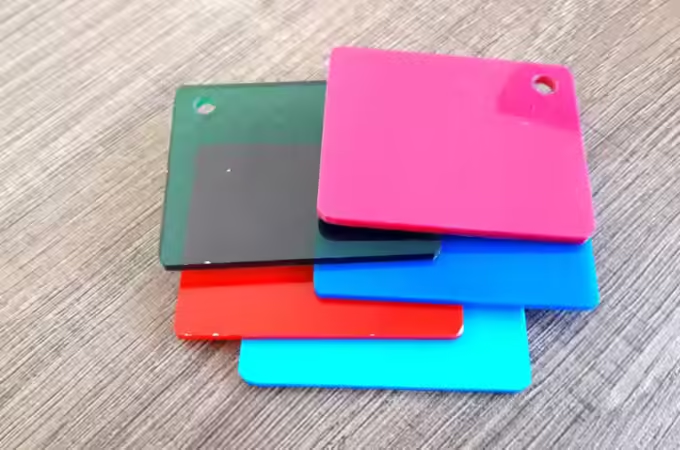
Why a Moisture Test is Essential Before Starting Your Repainting Project
Concrete is everywhere you want it, from the city sidewalks to the floors in buildings like malls and stores. Putting new paint on this tough material can make it look brand new, but don’t forget one important step first: check the moisture.
You can move forward with your job after doing a moisture test. Why is it important to look for signs of moisture in concrete? We’ll guide you on how this is affecting concrete and give you an easy method to test it to see if these signs are present.
After reading this, you can paint with confidence, and the paint job will look great and last for years on all of your concrete.
Table of Contents
ToggleWhy You Should Always Test for Moisture First
You must first learn how to prepare concrete before you can enjoy the excitement of selecting effective house painting for your Sydney’s home.
The first thing you need to do is measure the water content of the concrete. It can be challenging to paint over wet pavement, and the paint may not adhere. Additionally, the paint you choose could not last very long.
Why Moisture Testing Matters
You might dislike the idea of one more job to check off of your to-do list. Moisture testing is essential if you want to be sure you know what you’re dealing with and that your job goes off without problems. Here’s why:
- In the long run, it saves you money: You won’t have to paint as often if you keep moist out of the area.
- It makes things look good: Concrete paint is meant to last, and it will if you put it on concrete that is completely dry.
- It prevents damage: Water can damage many things, from paint that peels to mould and mildew growing on surfaces. Moisture checking can help you stay away from these problems!
Understanding Moisture’s Effects on Concrete
It can be very helpful to know what effects water can have on your concrete. When too much water gets into the pavement, it causes the binding agents to break down. The paint may bubble up and peel off. It leaves the surface looking bad and unprotected.
If you get the pavement too wet, it will also grow mould or mildew. This can be dangerous to you. It won’t be good for the concrete either.
How Moist Damages Concrete and Paint
Unlike what appears, concrete is not solid. Instead, it’s a huge water-holding sponge. Over-moisture will cause the paint not to stick as anticipated.
You won’t be surprised to hear that the concrete can eventually fall apart due to the same moist areas that make you sick. This type of moisture is ideal for the growth of mould and mildew, which will destroy the concrete for as long as it remains there.
The Risks of Skipping Pre-Paint Moisture Checks
If you don’t check for wetness, paint might not stick properly, which can cause it to peel or bubble. This mistake could also lead to more regular and more expensive painting jobs in the future.
What Could Go Wrong?
If you want to save time, it could seem like a good idea to skip the moisture check, but doing so might lead to a lot of issues.
- Neglecting Moisture Levels: Ignoring moisture testing may lead to painting over moist surfaces without even knowing. If you did, repainting may be required, which would cause a lot of time and resources wasted. It is important to start properly to avoid these from happening.
- Poor Paint Adhesion: Paint with a weak bond will just not look as good. Furthermore, it will peel or break far earlier than it should.
- More Repainting Is Required: Paint that doesn’t stick to a surface the way it should will require more frequent painting, which is more expensive and time-consuming.
- Fixing Issues Later Is Harder: It will require a lot more time and money to address issues that arise later if you neglect to perform the moisture check and moisture causes problems.
- Worse Look and Strength: Without knowing and applying the importance of repainting prep, the concrete can look bad and even get weaker.
- More Costs Over Time: All of these things mean that you will be spending more money on your concrete over time.
Do yourself a favour by catching these issues before they happen. It will save you a lot of money and trouble if you can find and address the problem early on.
When and How to Do a Moisture Check
To check the moisture level, clean the concrete and let it dry for a few days. Then, use a moisture metre on it. If it’s high, you should wait or treat the area first before painting it.
Picking the Right Time for a Check
You should check for moisture a long time before you paint again. You’ll have time to fix any problems you find. Also, try to check the wetness when the weather is like it will be when you paint so that the results are correct.
How to Check for Moisture Step by Step
- Get the Right Tools: The tool you need is a wetness metre that is made to check concrete.
- Prepare the Surface: Before you do the test, make sure the concrete is really clean and wait a few days. The reading you get will tell you how much moist is really in the concrete.
- Do the Moisture Test: Use the moisture metre by following the instructions. It will tell you how wet the concrete is.
- Understand What the Results Mean: Look at the moisture levels the metre shows you. If it’s within what the paint can handle, you’re good to go. If it’s too wet, you’ll need to wait or fix the moisture problem first.
Getting Professional Help
Getting help from a professional makes sure that the painting and moisture check are done right. Professionals are experts in avoiding paint problems because they have the knowledge and tools to do so. This saves you time and trouble.
When to Call in the Experts
Sometimes, it’s smarter to get a tips from painting experts, especially if:
- The Job Is Big or Complicated: If you’re painting a large area or it involves tricky bits, professionals can handle it better.
- You’re Not Sure How to Do It: If you don’t know much about painting or moisture testing, a pro can make sure it’s done right.
- You Need It Done Quickly: Professionals can work faster because they have the experience and the right tools.
Having a professional on board means you can relax, knowing your painting project will turn out great.
Expert Advice for the Best Results
- Choose the Right Paint: Not all paints are the same. Make sure you pick one that’s meant for concrete and suited for the weather in your area.
- Wait for the Right Weather: Paint when it’s dry and not too hot or cold. This helps the paint dry properly.
- Keep It Clean: Make sure the concrete is really clean before you start painting. Dirt and dust can stop the paint from sticking.
Final Thoughts
Before you repaint concrete, checking to see if it’s wet is an absolute must. You want your new paint to look great and last as long as possible.
Now that you know what wetness is and how to deal with it, you can paint with confidence that you’ve done everything right.
If masterful painting is what you’re after, call A One Korean Painting with a team of house painters Sydney homeowners trust the most. We understand everything we’ve talked about, most importantly how crucial it is to check for wetness before painting.
Our team does masterful work because we emphasise quality, and the longevity of your paint. Home, business and beyond, we’re the team for you. We’ll get the job done and make the painting process stress-free.
Get in touch with us, and we’ll make your concrete look great and last longer. We care most about how happy you are with the results.





